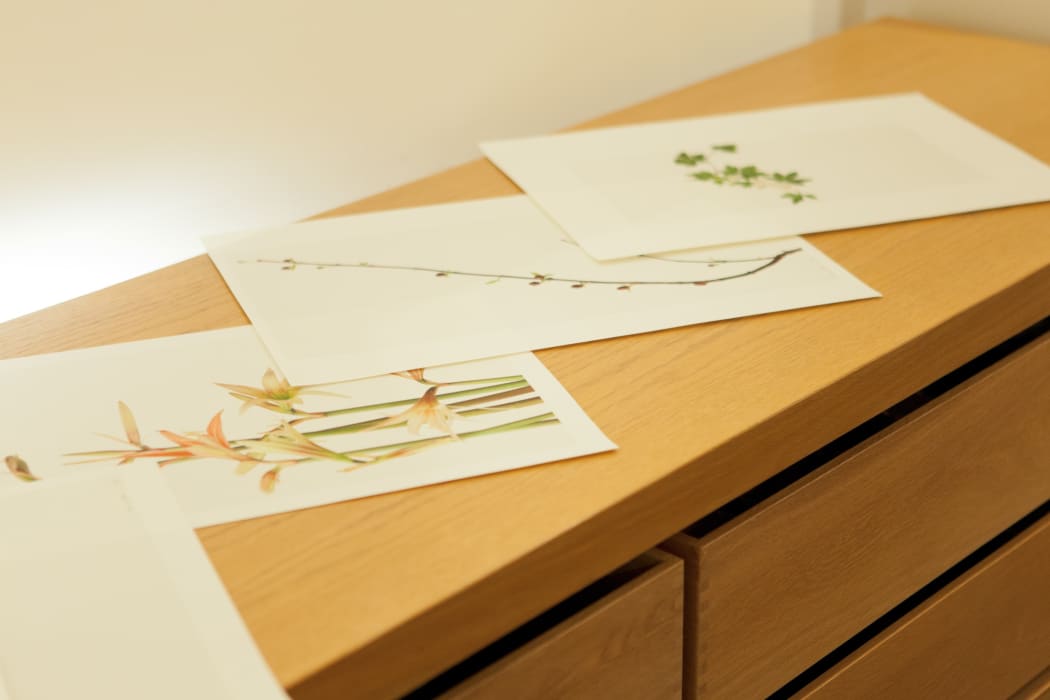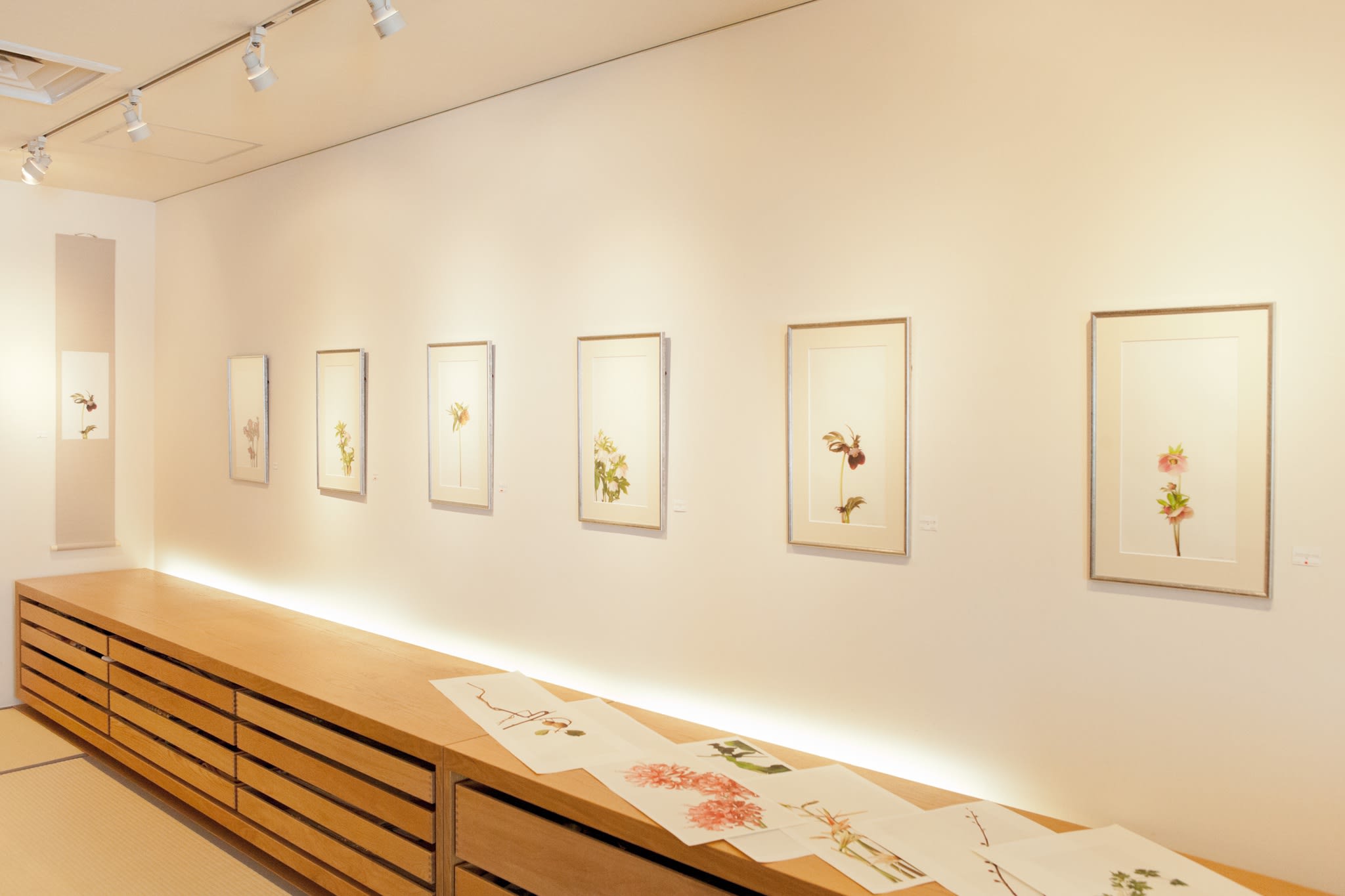
Washi, Japanese handmade paper, plays a central role in traditional aesthetics.
Prized for its translucence, warmth, soft texture, and durability, artists have harnessed washi’s unique qualities to create woodblock prints, calligraphy, fans, and paintings. Lanterns made from washi burn at festivals and shrines; sliding screens panelled with washi serve as dividers in traditional Japanese homes. In contemporary art, crafts, and design, the presence of washi signals tradition, history, and the artistic connection between past and present.

Tomo-oka prints his photographs directly on washi, a decidedly uncommon application of the material. Tomo-oka’s use of matte ink on the softly reflective washi gives his photographs a painting-like quality. His focus on trees, grasses, and flowers; level perspective; and monochrome backgrounds evoke the Rinpa school, the popular style of Edo-period (1615–1868) painting. Tomo-oka’s Rinpa references are further highlighted when his photographs are mounted on silk as traditional hanging scrolls.

The production of washi is itself an artform that requires great skill. Tomo-oka's paper is called Awagami, local paper from Shikoku.
Production begins in mid-winter, with the harvest of paper mulberry trees, which are then steamed to remove their bark.
The fibrous layers are separated and boiled in lye, bleached, mashed to a pulp, and poured into frames. The paper then dries and is cut to its desired size. Though the basic materials and process remain the same, subtle variations in each step of manufacture, from the specific layer of bark used to the amount of lye used, influence the washi’s texture, color, and strength. The artisan might also include bits of gold, silver, or even bark, leaves, or flowers to lend the washi overtones of opulence, or hints of nature and the seasons.
While Rinpa paintings were traditionally set against a gold background, Tomo-oka gives this space over to undecorated washi with visible wood fibers. The distinction between the washi and the inkjet printed photograph emphasizes the contrasting themes of durability, ephemerality, memory, and decay in Tomo-oka’s works. While the modern technology of digital photography captures a fleeting moment in the life of a plant, the physicality of the washi on which the photograph is printed represents a durable, traditional medium, examples of which have been known to survive for over a thousand years.
Contributed by Harrison Schley
Further reading:
Casserley, Nancy Broadbent. Washi: The Art of Japanese Paper. London: Kew Publishing, Royal Botanic Gardens, 2013.
